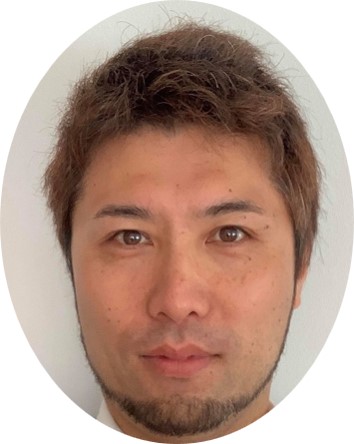“Sensei, I am not good at listening. Please help me!” This was an actual voice I heard when I started teaching, at a senior high school. Also, I actually had this problem when I was a student, too. I was always scared of listening.
It was in 2007 when I happened to encounter an interesting practice, shadowing, “a task for improving L2 listening comprehension through immediate ‘online’ repetition of input speech” (Kadota, 2019, viii); learners repeating what they hear as simultaneously as possible.[1] I learned it would be effective for listening skill development, and used it in class. To my surprise, it worked, and it has since been shown to improve English learners’ listening comprehension skills (see Hamada, 2019 for review). Still, the truth is, when teachers first hear this, they often become skeptical, wondering why this simple practice can be so effective.
[1] Many examples can be found online by Googling for “Shadowing.”


Our listening process consists of top-down processing (i.e., using background information to understand) combined with bottom-up processing (e.g., recognizing each sound and word), and one of the greatest benefits of shadowing is that the intensive practice it gives helps learners’ bottom-up listening processes, especially at the word-recognition level (Hamada & Suzuki, 2022; Kadota, 2019;). Because the simple explanation for this is that shadowers naturally attend to the sounds rather than meaning while shadowing, basic perception skills are gradually reinforced. To explain it in more detail, cognitive resource is the key concept. Our cognitive resources are the mental capacity available for a given task, for example language processing. In L1, our speech perception is automatized, so we do not normally need to be concerned about failing to recognize the phonological features of the speech we are listening to; we have a lot of cognitive resources to process the meaning of the input. By contrast, in L2, especially in such a case as Japanese and English, where there is a large language distance, learners’ cognitive resources are used in the perception process when listening, so they often do not have enough cognitive resources left to process the meaning. By practicing shadowing, gradually the perception skills will become more automatic; consequently, the learners will have more cognitive resources to spare for other processes (see more in Hamada & Suzuki, 2022; Kadota, 2019). It may be somewhat difficult to understand this mechanism but if you shadow something in your L2 or L3, you will see what I mean.
In terms of listening processing, when we listen to speech, we unconsciously use most of our cognitive resources to understand the meaning of what we are hearing; however, when listening to L2 or L3, learners often have problems with recognizing words, ending up not understanding fully. To solve this problem, instructors often have students listen to English conversations repeatedly but the problem of weak word recognition skills is not so easily solved, because, fundamentally, the listening process does not change by just listening again. In contrast, when shadowing, learners’ attention is inescapably shifted to the sounds rather than the meaning, so learners can improve their word recognition skills in ways that other types of listening practice do not cover as efficiently.
So, how can we use shadowing in teaching listening? Here are some dos and don’ts (see more in Hamada, 2021).
Dos
- In principle, learners shadow the target speech without seeing a transcription of it. Occasional use of a transcription for checking is fine.
- The teacher should teach the content of the language before having the learners shadow it so that they can focus on its phonological features.
- The speech should be delivered at a level the learners aim to achieve, not too fast, not too slow. In general, any genre of materials will do.
- Try various speeches rather than working on one speech intensively. Practicing four or five times using the same speech is enough; then move on to another one.
Don’ts
- Don’t have learners shadow while looking at the script because their attention will be diverted between spelling, meaning, and sounds.
- Don’t let learners try too hard to shadow perfectly. It is okay not to imitate everything. The important thing is to focus on and reinforce the word recognition process.
- Don’t mix up shadowing with the typical listen-and-repeat activity (where learners repeat what teachers say, phrase by phrase). They are cognitively different practices.
Is it really effective?
Yes, positive effects on listening skills have been well supported, both theoretically (e.g., Kadota, 2019) and practically (see Hamada, 2019 for a summative review). In fact, the learners who benefit the most are lower listening-proficiency learners and those whose L1 is quite different from the target language. For example, many Japanese learners’ listening skills are weak mainly because the Japanese language is totally different from English, so shadowing has become popular in Japan for its positive effects. The positive effects of shadowing have been found at various school levels (junior high school: Mochizuki, 2010; senior high school: Lin, 2009; university: Hamada, 2016).
When you see learners shadowing, you may think it is a speaking practice, because they are reproducing what they hear, but shadowing is actually a listening practice for many learners, and can be a pronunciation practice for those whose listening skill level is higher than intermediate. In other words, if your students have good L2 ears, they can find the differences between the pronunciation being modelled and their own and try to copy it. On the other hand, if your students’ bottom-up listening skills are weak, it is recommended that they first work on shadowing as a listening practice, and then shift to using it for pronunciation development.

Is it obsolete, reminiscent of the Audio Lingual Method?
Well, it may remind you of this old style of teaching, but it is different. Shadowing is not communication-oriented and learners practice individually, so some teachers who believe that language acquisition works only through conversation activities may feel some resistance to it. Pure communication-based teaching may work in ESL situations; but in the EFL context, where learners’ exposure to the target language is limited, those who have difficulty listening, especially at a lower-level, will keep suffering from fundamental problems if they are not given basic sound discrimination and word recognition skills first. Without this, they are being asked to process language at a far higher level than they are capable of. They need a simple and effective strategy to solve their listening problems quickly. Furthermore, shadowing is not a repetitive rote memorization practice but has the clear purpose of developing bottom-up listening skills and pronunciation, as well as being supported both theoretically and empirically.

Conclusion
I have introduced shadowing, summarizing briefly what it is and its benefits for language learners. You may feel a little skeptical at first but, in fact, this is something everybody does in daily life. When you are in a noisy place and try to focus on something you want to hear, you try to attend to it by shadowing it in your head, unconsciously. When you are listening to a song and singing or humming along, you are doing shadowing too. But, actually, seeing is believing. Try it out and see how it goes. Next time your students say, “I cannot listen well,” I think you will have an answer: “Okay, let’s shadow.”
References
Hamada, Y. (2016). Shadowing: Who benefits and how? Uncovering a booming EFL teaching technique for listening comprehension. Language Teaching Research, 20(1), 35-52.
Hamada, Y. (2019). Shadowing: What is it? How to use it. Where will it go? RELC Journal, 50(3), 386-393.
Hamada, Y. (2021). Shadowing procedures in teaching and their future. The Language Teacher, 45(6), 32-36.
Hamada, Y., & Suzuki, Y. (2022). Situating shadowing in the framework of deliberate practice: A guide to using 16 techniques. RELC Journal, 00336882221087508.
Kadota, S. (2019). Shadowing as a practice in second language acquisition: Connecting inputs and outputs. Routledge.
Lin, L. (2009). A study of using “shadowing” as a task in junior high EFL program in Taiwan [Unpublished master’s thesis]. National Taiwan University of Science and Technology, Taipei.
Mochizuki, H. (2010). 日本の学校英語教育におけるシャドーイング実践研究 [A practical research of shadowing training in English language teaching in Japanese schools]. 第二言語としての日本語の習得研究, 13, 71-94.

Yo Hamada is an associate professor at Akita University. He holds a Master’s degree from Temple University and a PhD from Hiroshima University. His research areas include listening and pronunciation. He has published an academic book and more than 20 papers about shadowing. His research principle is to help students.

